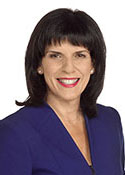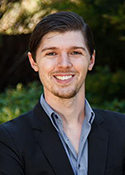Chisholm
Margin: Labor 1.6%
Region: Eastern Melbourne, Victoria
Outgoing member: Anna Burke (Labor)
In a nutshell: Labor has held Chisholm on sometimes tight margins since 1998, and how faces the challenge of defending it upon the retirement of Anna Burke.
Candidates in ballot paper order

|
MELANIE VASSILIOU NYREE WALSHE CRAIG McCRACKEN JOSH FERGEUS JULIA BANKS STEFANIE PERRI |
Together with Bruce, Chisholm is one of two neighbouring seats in south-eastern Melbourne where Labor’s task in defending a tight margin is complicated by the retirement of a sitting member. Held since 1998 by Anna Burke, Chisholm covers a band of suburbs about 15 kilometres from central Melbourne, including Box Hill and Mont Albert in the north, Burwood and Mount Waverley in the centre, and Oakleigh and Clayton in the south. Labor is strongest south of the Monash Freeway, with the Mont Albert area leaning to the Liberals, and most of the remainder being naturally marginal.
Chisholm has existed in name since the enlargement of parliament in 1949, but was initially based further west, around Camberwell and Glen Iris further to the west. The entirety of this area now serves to bolster the Liberals in Higgins and Kooyong. The area now covered by Chisholm was divided between Deakin, La Trobe and (from 1955) Bruce during the period of post-war growth, until Chisholm drifted eastwards in stages between 1969 and 2013. This process made a Labor-leaning seat of what had long been a safe one for the Liberals, being held in turn by Wilfred Kent Hughes until 1970 and Tony Staley in 1980. The Liberal grip was then loosened by successive swings to Labor in 1977 and 1980. Labor’s candidate on both occasions, Helen Meyer, succeeded on the third attempt in 1983, when she unseated Staley’s one-term successor, Graham Harris.
The seat was recovered for the Liberals in 1987 by Michael Wooldridge, who went on to serve as Health Minister in the early years of the Howard government. Wooldridge maintained a precarious grip on the seat until 1998, when he jumped ship for the more secure seat of Casey. Anna Burke then gained the seat for Labor and retained it on narrow margins in 2001 and 2004, before a 4.7% swing in 2007 boosted her margin to 7.4%. This was followed by consecutive swings to the Liberals of 1.3% and 4.2%, the former being against the trend of a strong statewide result for Labor. Burke’s national profile received a considerable boost when she replaced Peter Slipper in the Speaker’s chair after he stood aside in April 2012, initially on an acting basis and then officially when Slipper resigned the following November.
A Labor preselection that followed Burke’s retirement announcement in December was won by Monash mayor Stefanie Perri, who was reported the beneficiary of a deal in which the National Union of Workers was readmitted to the dominant sub-faction of the Victorian Right, thereby placing it under the umbrella of its “stability pact” with the Socialist Left. Perri had faced competition from Manningham mayor Jennifer Yang, who ran in the seat of Mount Waverley at the November 2014 state election, and had offered to raise $500,000 of her own money for the party’s campaign if preselected. The Liberal candidate is Julia Banks, a lawyer for George Weston Foods.
Analysis by William Bowe. Read William’s blog, The Poll Bludger.


